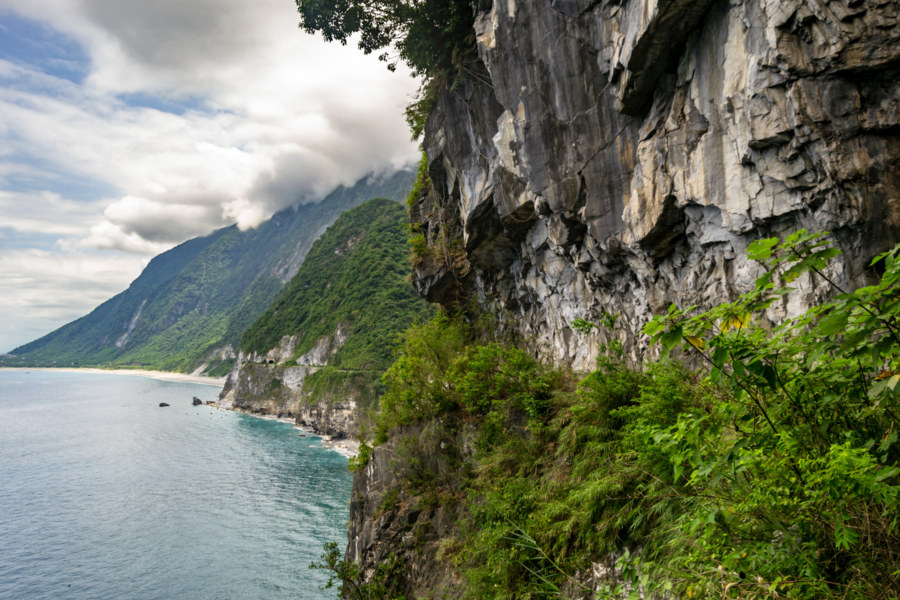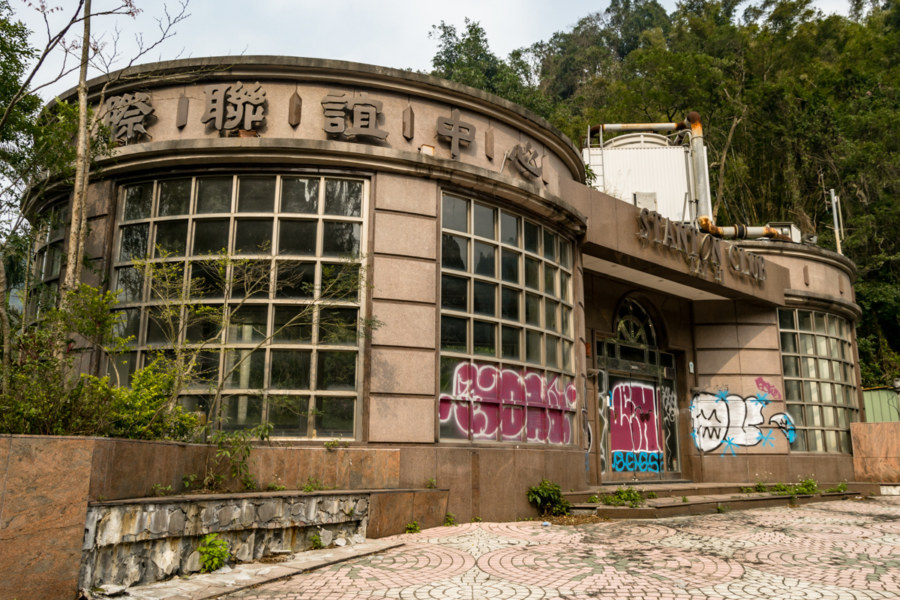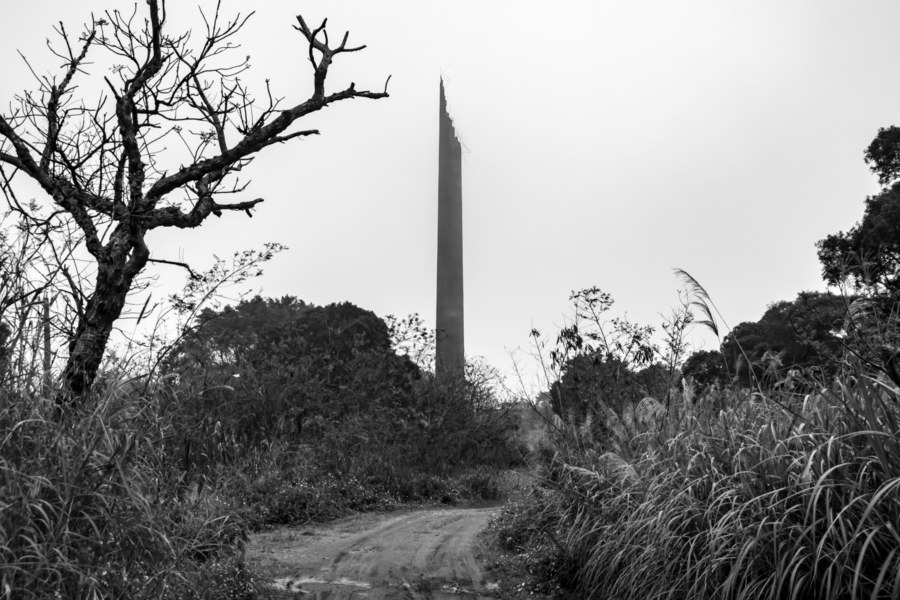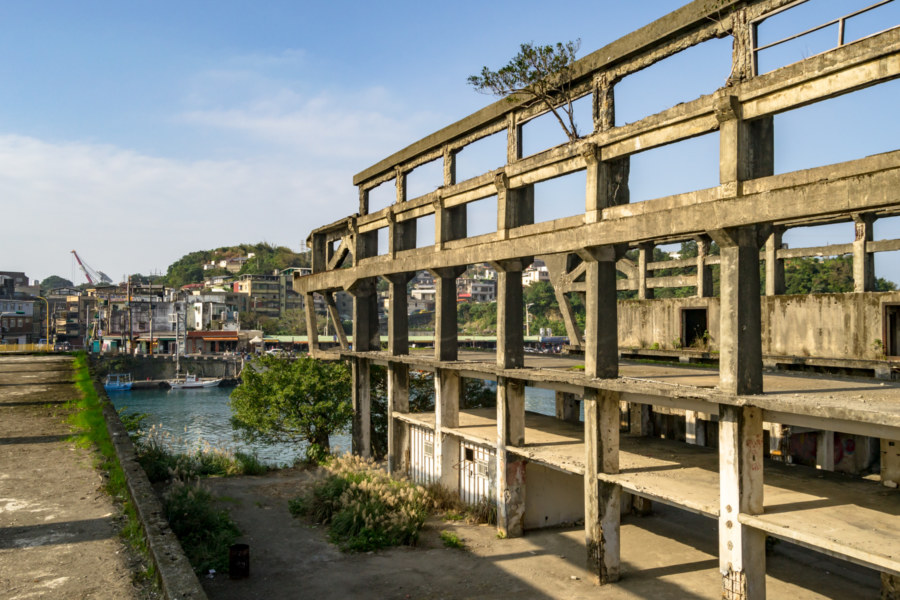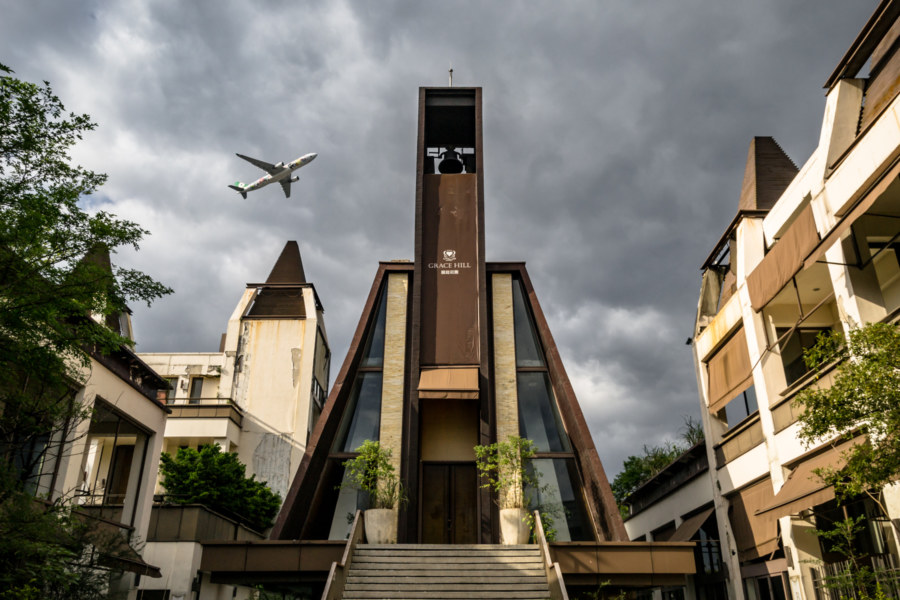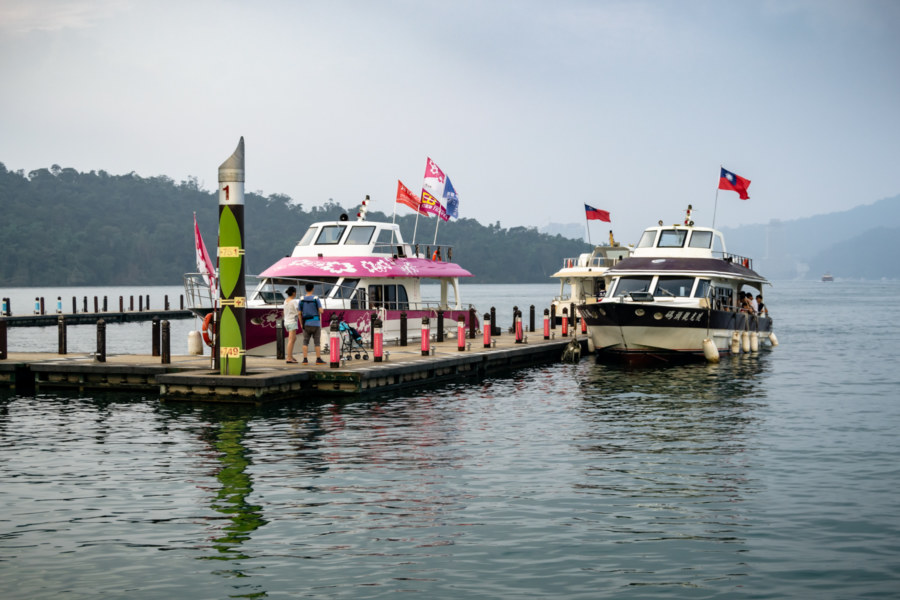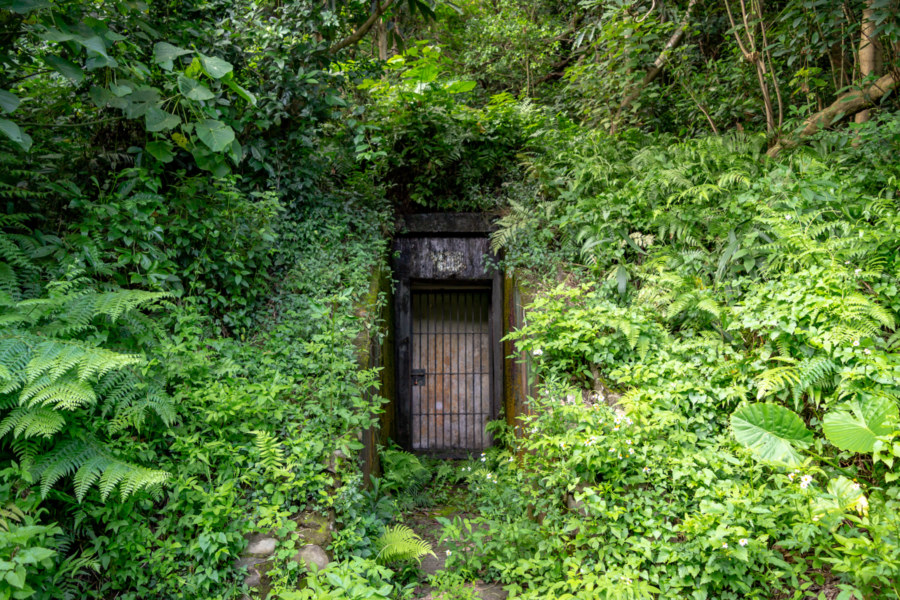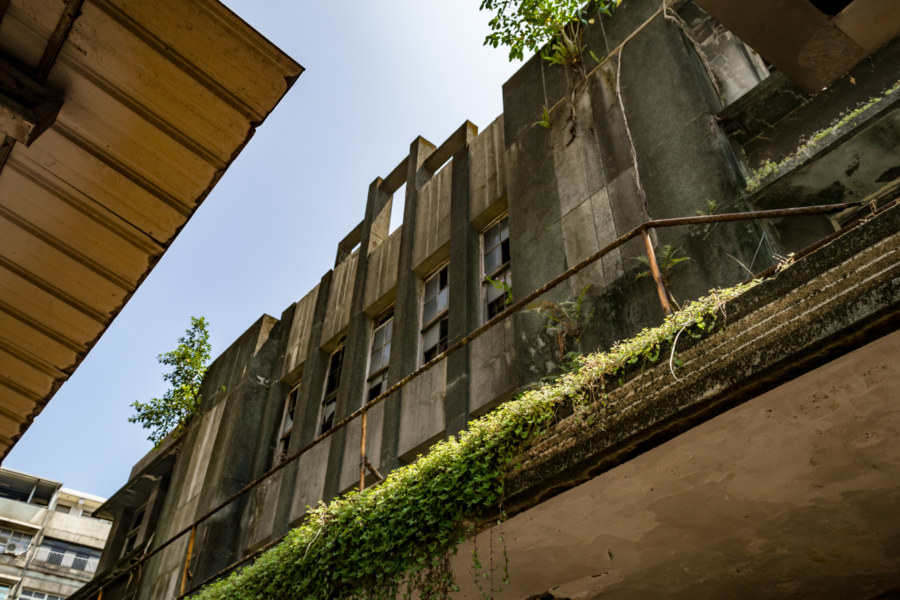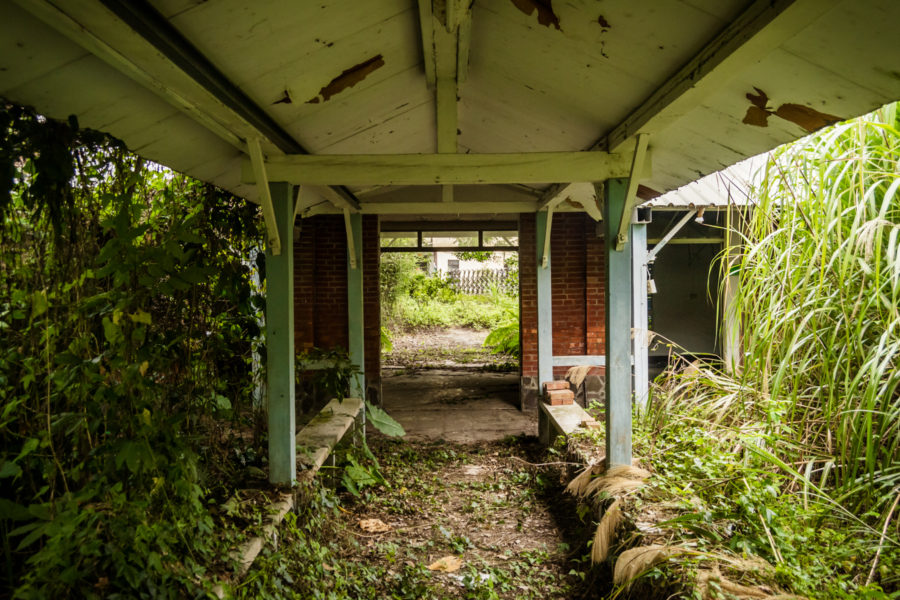In May 2018 I seized an opportunity to ride the beautiful and dangerous Suhua Highway (蘇花公路) from Hualien City to Su’ao in Yilan. I had previously taken this same route on bicycle back in 2013—a harrowing trip I’ll never forget—so I was eager to drive a scooter and experience it at a different pace. I also visited a number of historic sites along the way, including several former Shinto shrines, as part of an ongoing project documenting various elements of the Japanese colonial legacy in Taiwan. Much of the highway itself also owes something to Japanese engineering, having opened to vehicular traffic in 1931, but it has been continuously repaired and expanded since then.
Stanton Club 飛宏象山國際聯誼中心
The Stanton Club (飛宏象山國際會議聯誼中心) was an exclusive business and recreation facility located in the foothills of the Nangang Mountains in Xinyi, Taipei. Although details are scant, it was in operation from the late 1990s until approximately 2005, when it went out of business for reasons unknown. Most of the club is underground—and with floorspace or around 3,500 ping, a Taiwanese unit of measurement corresponding to approximately 12,000m2, it was a rather large place. Perhaps owing to its relatively accessible location this became one of the most notorious ruins in Taipei for awhile, even appearing on television at times. The space was finally leased and renovated in 2018 so I am now at liberty to share some photos from several forays made to the site in previous years.
Linkou Shengtai Brick Kiln 林口勝泰磚窯
Linkou, now the fastest-growing suburban district in the greater Taipei area, was once home to more than 30 brick factories, the highest concentration in northern Taiwan. Shèngtài Brick Kiln (勝泰磚窯), at the far northern extent of the Linkou Plateau, is one of the last remnants of this once-flourishing brick-making industry. Numerous ruins can be found across the sprawling site but the most impressive is a Hoffmann kiln, easily identified by its broken chimney. Hoffmann kiln technology was introduced to Taiwan during the Japanese colonial era but this particular kiln only dates back to the mid-1960s, and it has now been abandoned for many decades.
Yuanlin Credit Union 員林信用合作社
Yuanlin Credit Union 員林信用合作社 was a small town bank from Yuanlin, Taiwan, that went out of business at the turn of the century. It originated with a Japanese colonial era credit union founded in 1914 and based out of a long-vanished red brick building directly across from Yuanlin Station 員林車站, a plot of land now occupied by the doomed Golden Empire Building 黃金帝國大樓. In the post-war chaos the original credit union was renamed and reorganized several times, eventually giving birth to the credit union that constructed this particular branch, possibly in the late 1960s or early 1970s.
Agenna Shipyard 阿根納造船廠
Āgēnnà Shipyard 阿根納造船廠 is among the most popular abandoned places in northern Taiwan. It is located in the historic port city of Keelung across the narrow Bāchǐmén Channel 八尺門海峽 from Hépíng Island 和平島, site of the first Spanish settlement in Taiwan, and just around the corner from the equally photogenic Zhèngbīn Harbour 正濱漁港. The shipyard opened in 1967 but was only in business until the 1980s. After many years of neglect the skeletal ruins of the shipyard aroused renewed interest in 2016 when the current leaseholder attempted to demolish the structure. An immediate public outcry prompted the government to designate the shipyard a heritage property, and the cultural bureau is now formulating plans to develop the area into a tourist attraction of some kind. In the meantime, the crumbling ruins of the former shipyard attract hundreds or even thousands of daily visitors.
Grace Hill 麗庭莊園
Grace Hill (Lìtíng Zhuāngyuán 麗庭莊園) is a former wedding venue situated in an industrial park in Neihu, Taipei. It opened in 2005 under the management of the Zhǎngxìng Wedding Company (長興婚禮事業有限公司), an outfit keen to disrupt the local market with a larger, more extravagant space for weddings and other events. The business struggled at first but became more widely known after it was featured in television series, music videos, and the news. In 2007 the space was leased to Dears Brain (迪詩), a Japanese wedding company hoping to enter the Taiwanese luxury wedding market. The original owners took a step back, ceding control of day-to-day operations to Japanese management, and the business continued to grow over the next several years.
Nantou Road Trip 2015: Puli to Sun Moon Lake
This post gathers photos taken on two scooter rides from Puli to the shores of Sun Moon Lake 日月潭 in Yuchi, part of a multi-day road trip undertaken in late 2015. I didn’t have a chance to explore as deeply as I would have liked, nor did I really know what was so special about this part of the country while I was there, so this post will be somewhat less extensive than most others in this series. I hope to someday return to the Sun Moon Lake area and gather material to make a fully informed post about this fascinating part of Taiwan.
A Door in the Forest
An abandoned bunker in the foothills of Yangmingshan.
Recently I went riding up Jiànnán Street (劍南街), a scenic mountain road connecting Zhongshan and Shilin. Along the way I noticed many bunkers and sentry posts, remnants of a time when this entire mountainside was under military control and strictly off-limits to civilians. One bunker in particular struck me as particularly pleasing, for it was little more than a door in the forest, a dark promise surrounded by a vivid shade of green. For reference, this place is located on the eastern flank of the modest Wénjiānshān (文間山), and for more about the area you can consult Chinese language blogs here and here.…
Keelung Dahua Theater 基隆大華戲院
Dàhuá Theater 大華戲院 is an early post-war movie theater in the grim northern port town of Keelung City, Taiwan. It was in business as early as 1949 and officially registered by 1952. Beyond that, little trace of it can be found online. Until recently I assumed this theater had been demolished, just like every other vintage standalone in downtown Keelung, one of the most densely-packed urban environments in the nation. Acting on a tip that a signboard was still in place I went to scope it out one afternoon in 2018—and was completely surprised to find the theater still standing, albeit in an extremely dilapidated condition.
Puli Tuberculosis Sanatorium 埔里肺結核療養所
Tuberculosis remains the deadliest communicable disease in Taiwan, claiming approximately 600 lives per year, but great strides have been made in reducing its toll throughout the 20th century. Nearly 5% of the population were afflicted by the disease in the late 1940s—and with an annual mortality rate of 3 in 1,000, it was also among the leading causes of death of any kind in post-war Taiwan. The disease was especially prevalent among the Taiwanese Indigenous people of the remote mountainous interior, who simply couldn’t afford to see a doctor or purchase medicine (even if there were a clinic anywhere nearby).
Christian missionary organizations went to great lengths to expand access to medical services in the late 1950s, founding numerous clinics and sanatoriums in Indigenous territory all across Taiwan. In 1957 this particular tuberculosis sanatorium was constructed next to a secluded lake on the outskirts of Puli, Nantou, to provide free treatment and relief for people of the mountains. The next several decades saw great advances in healthcare in Taiwan and the sanatorium closed in 1980, its purpose fulfilled. It reopened as a Presbyterian retreat center and campground in the late 1980s and was ultimately abandoned to the elements sometime in recent years.
